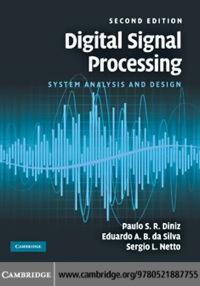This exercise describes the inverse Chebyshev approximation. The attenuation function of a lowpass inverse Chebyshev filter is
Question:
This exercise describes the inverse Chebyshev approximation. The attenuation function of a lowpass inverse Chebyshev filter is characterized as
\[\begin{aligned}\left|A\left(\mathrm{j} \Omega^{\prime}\right)\right|^{2} & =1+E\left(\mathrm{j} \Omega^{\prime}\right) E\left(-\mathrm{j} \Omega^{\prime}\right) \\E\left(s^{\prime}\right) E\left(-s^{\prime}\right) & =\frac{\epsilon^{\prime 2}}{C_{n}^{2}\left(\mathrm{j} / s^{\prime}\right)}\end{aligned}\]
where \(C_{n}\left(\Omega^{\prime}\right)\) is a Chebyshev function of order \(n\) and \[\epsilon^{\prime}=\sqrt{10^{0.1 A_{\mathrm{r}}}-1}\]
The inverse Chebyshev approximation is maximally flat at \(\Omega^{\prime}=0\) and has a number of transmission zeros at the stopband placed at the inverse of the roots of the corresponding Chebyshev polynomial. Using the equations above, the stopband edge is placed at \(\Omega_{\mathrm{r}}^{\prime}=1 \mathrm{rad} / \mathrm{s}\), and this property should be considered when applying denormalization.
(a) Develop expressions for the passband edge, the transmission zeros, and the poles of a normalized filter of order \(n\).
(b) Design the filter of Exercise 6.6 using the inverse Chebyshev approximation.
Step by Step Answer:

Digital Signal Processing System Analysis And Design
ISBN: 9780521887755
2nd Edition
Authors: Paulo S. R. Diniz, Eduardo A. B. Da Silva , Sergio L. Netto





